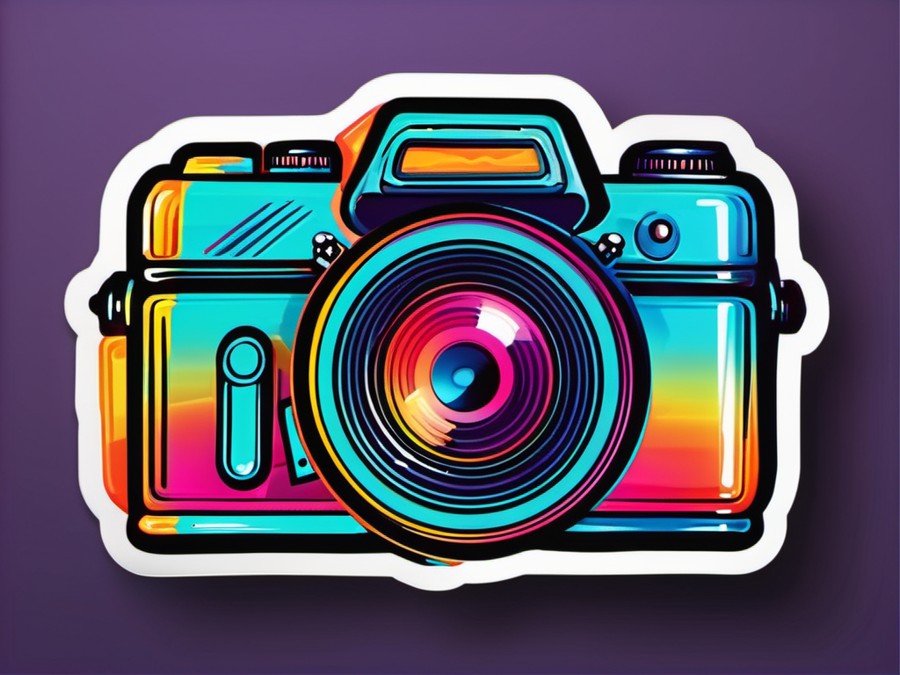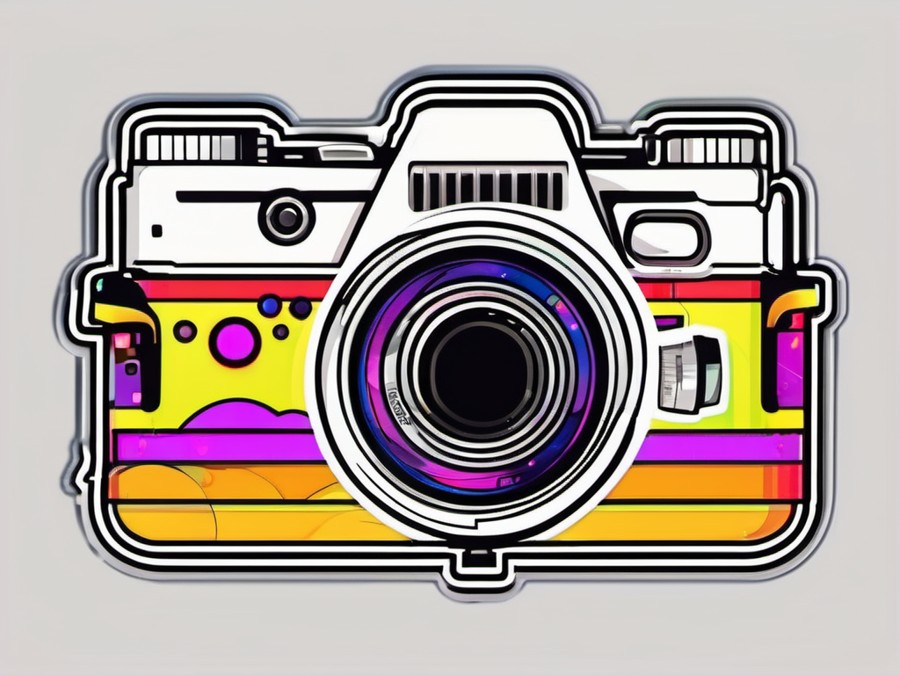· Charlotte Will · DSLR Cameras · 9 min read
What is the Best DSLR Camera for Wildlife Photography?
Discover the best DSLR cameras for wildlife photography, including top models from Canon and Nikon. Learn essential features to consider, such as autofocus speed, image stabilization, and frame rate. Find budget-friendly options and tips for capturing stunning wildlife images.

Capturing the breathtaking beauty and unpredictable behavior of wildlife requires a camera that can keep up with nature’s pace. If you’re an aspiring wildlife photographer looking to invest in a DSLR camera, you’ll want one that excels in autofocus speed, image stabilization, low light performance, frame rate, and more. But with so many options on the market, how do you know which one is best suited for your needs? Let’s delve into the features and models that make a DSLR camera ideal for wildlife photography.
Key Features to Look For in a Wildlife Photography Camera
Autofocus Speed: Why It’s Crucial for Capturing Quick-Moving Subjects
Autofocus speed is paramount in wildlife photography. Animals are often on the move and can change direction in an instant, so you need a camera that can keep up. Look for models with advanced autofocus systems that offer multiple AF points and customizable settings. This ensures you can track your subject accurately, even in difficult conditions.
Image Stabilization: Ensuring Crystal Clear Shots in Any Condition
Whether you’re shooting from a safari jeep or a hidden blind, image stabilization is invaluable. This feature compensates for camera shake, ensuring your shots are crisp and clear, even in low light or when using a long lens. Most modern DSLRs come with some form of image stabilization, but the quality and effectiveness can vary.
Frame Rate and Why It Matters
A high frame rate allows you to capture a series of images in rapid succession. This is crucial for wildlife photography, as it increases your chances of capturing the perfect moment. Look for cameras with a frame rate of at least 5 frames per second (fps), though models with higher rates are preferable.
Megapixels: Does Higher Always Mean Better?
While a higher megapixel count can provide greater detail, it’s not the only factor to consider. Balancing megapixels with other features like autofocus speed and frame rate is essential. Additionally, a higher megapixel count can lead to larger file sizes, requiring more storage space and processing power.
Lens Compatibility: Ensuring Versatility in Your Shoots
The lens you choose can greatly impact your wildlife photography. Opting for a camera with good lens compatibility ensures you have access to a range of lenses that suit different scenarios. Whether it’s a telephoto lens for distant subjects or a macro lens for close-ups, versatility is key.
Weather Sealing and Durability: Surviving the Elements
Wildlife photography often involves being outdoors in challenging conditions. A weather-sealed camera can withstand rain, dust, and harsh temperatures, ensuring your equipment remains reliable in any environment.
Ergonomics: Comfort and Ease of Use in the Field
Comfort is crucial when you’re spending hours waiting for the perfect shot. Opt for a camera with an intuitive design and features that are easy to access. Ergonomics can make a significant difference in your photography experience, reducing fatigue and allowing you to focus on capturing incredible moments.
Low Light Performance: Capturing Images in Challenging Conditions
Many wildlife sightings occur during early morning or late evening hours, when light is low. A camera with excellent low light performance can make a significant difference in the quality of your images. Look for models with large sensors and advanced noise reduction technology to ensure clear, detailed shots even in challenging conditions.
Top DSLRs for Wildlife Photography: A Closer Look
Canon EOS-1D X Mark III: The Professional’s Choice
The Canon EOS-1D X Mark III is a top choice for professionals, offering exceptional autofocus capabilities and a blistering frame rate of up to 16 fps. Its robust build quality and weather sealing make it ideal for outdoor use, while its advanced image processing ensures stunning detail and clarity.
Key Features That Make It Stand Out
- Advanced autofocus system with 191 AF points
- Exceptional low light performance with a range of ISO 100-819200
- Weather-sealed and durable design for outdoor use
Nikon D6: Cutting-Edge Technology for Serious Photographers
The Nikon D6 is another powerhouse in the wildlife photography arena. Its autofocus system offers 105 cross-type AF points, ensuring precise tracking of even the fastest subjects. With a burst rate of up to 14 fps, it’s perfect for capturing high-speed action.
Why It’s a Favorite Among Wildlife Enthusiasts
- Advanced AF system with 105 cross-type points
- High frame rate of up to 14 fps for capturing fast action
- Excellent low light performance with a range of ISO 100-102400
Sony Alpha a9 II: Bridging the Gap Between DSLR and Mirrorless
While not a traditional DSLR, the Sony Alpha a9 II offers many of the advantages of mirrorless technology while maintaining the robust build quality of DSLRs. Its advanced autofocus system, high frame rate, and exceptional image quality make it a strong contender for wildlife photography.
How It Offers the Best of Both Worlds
- Advanced autofocus with 693 phase-detection AF points
- High frame rate of up to 20 fps with no blackout in viewfinder
- Excellent low light performance with a range of ISO 100-51200
Affordable Options: Great Cameras Without the Hefty Price Tag
Canon EOS 90D: Balancing Quality and Accessibility
For those on a tighter budget, the Canon EOS 90D offers an excellent balance of features and affordability. Its autofocus system is highly capable, with 45 cross-type AF points, and it offers a solid frame rate of up to 10 fps.
What Makes It a Worthy Investment?
- Advanced AF system with 45 cross-type points
- Affordable price point without sacrificing quality
- Good low light performance with a range of ISO 100-25600
Nikon D780: A Versatile Choice for Beginners and Enthusiasts
The Nikon D780 is another excellent option for those looking to balance cost and performance. Its autofocus system boasts 51 AF points, while its burst rate of up to 7 fps is respectable for the price point.
How It Stacks Up Against More Expensive Models
- Advanced AF system with 51 points
- Competitive price point without sacrificing key features
- Decent low light performance with a range of ISO 100-51200
Pentax K-1 Mark II: A Unique Option for Budget-Conscious Photographers
The Pentax K-1 Mark II offers a unique blend of features and affordability. Its 36 megapixel sensor provides excellent detail, while its weather-sealed design ensures durability in the field.
What Sets This Camera Apart?
- High-resolution sensor for exceptional detail
- Weather-sealed design for outdoor use
- Competitive price point for the features offered
Case Studies: Real-Life Examples of Wildlife Photography
Capturing the Big Five in Africa: A Tale of Endurance and Patience
Shooting the Big Five in their natural habitat requires both technical prowess and a great deal of patience. photographers often have to wait for hours, or even days, to capture the perfect shot. The ability to track subjects accurately and shoot quickly when the moment presents itself is crucial.
The Role of Camera Features in Successful Shots
- Advanced autofocus for tracking moving subjects
- High frame rate for capturing quick action
- Excellent low light performance for early morning and late evening shots
Documenting the Elusive Snow Leopard: A Story of Perseverance
Photographing the elusive snow leopard is a challenge that tests both your skills and endurance. These cats inhabit harsh, high-altitude environments where conditions can change rapidly. A durable, weather-sealed camera is essential for withstanding these tough conditions.
How Camera Technology Enhances the Documentation Process
- Advanced autofocus for precise tracking
- Weather sealing to protect against harsh conditions
- Excellent image stabilization for clear shots in low light
Setting Up Your Camera for Optimal Wildlife Shots
Essential Settings to Master Before You Begin
Before you head out into the wild, ensure your camera is set up for optimal performance. Understanding key settings like shutter speed, aperture, and ISO is crucial for capturing the best possible images.
Tips for Customizing Your Camera for Different Scenarios
- Adjust shutter speed to freeze or blur motion, depending on the effect you want
- Choose aperture based on the depth of field you desire
- Use ISO to balance image quality and sensitivity in low light conditions
Accessories That Can Enhance Your Wildlife Photography
The Importance of a Good Tripod for Stable Shots
A sturdy tripod is essential for steadying your shots, especially when using a long lens. Look for models that are lightweight yet durable, ensuring they can withstand the rigors of outdoor use.
Why a Remote Shutter Release Can Make a Difference
Using a remote shutter release allows you to take photos without touching the camera, reducing the risk of shake and ensuring crisp images. This is particularly useful when shooting at longer exposures or when you need to maintain a low profile to avoid startling wildlife.
Post-Processing Tips for Enhancing Your Images
Essential Software Tools for Wildlife Photographers
Investing in good post-processing software can significantly enhance your images. Popular options include Adobe Lightroom and Photoshop, which offer a wide range of tools for adjusting exposure, color balance, and more.
How to Use Them Effectively for Stunning Results
- Lightroom for quick adjustments and batch processing
- Photoshop for more advanced editing and retouching
- Plugins like Nik Collection for additional effects and enhancements
Conclusion: Choosing the Best DSLR Camera for Your Needs
Selecting the best DSLR camera for wildlife photography involves considering multiple factors, including autofocus speed, image stabilization, frame rate, and low light performance. Whether you’re a professional looking for the latest and greatest features or a beginner on a budget, there are plenty of excellent options available.
By understanding your specific needs and the conditions you’ll be shooting in, you can make an informed decision about which camera is right for you. Don’t forget to invest in quality accessories and take the time to learn your camera inside out—these steps will go a long way in helping you capture stunning wildlife images.
FAQs
What is the best lens to use for wildlife photography?
- A telephoto lens with a focal length of at least 400mm is typically recommended for wildlife photography. Lenses in the range of 200-400mm can offer a good balance between reach and versatility.
How important is burst mode for capturing wild animals?
- Burst mode is crucial as it allows you to take multiple shots in quick succession, increasing the chances of capturing the perfect moment. Animals can move unpredictably, so a high frame rate ensures you don’t miss the action.
Can a beginner use an advanced DSLR for wildlife photography?
- While advanced models offer more features, many have user-friendly modes that allow beginners to get great shots. Investing in a good camera from the start can help you develop your skills and produce high-quality images.
What kind of memory card is best for wildlife photography?
- A high-speed SD card (UHS-II) is ideal for capturing rapid bursts of photos and ensuring smooth playback. Look for cards with a high write speed (e.g., 90 MB/s or higher) to handle the large file sizes and quick data transfer rates of modern cameras.
Is it necessary to have a weather-sealed camera for outdoor photography?
- While not absolutely necessary, a weather-sealed camera provides extra protection against the elements and can help extend the lifespan of your device. If you plan on shooting in challenging conditions, it’s a worthwhile investment for long-term reliability.




